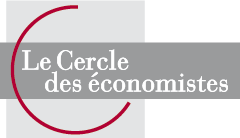Low interest rates to preserve an indebted economy
Overview
The financial crisis of 2007-2008 resulted in an average increase of 30 percentage points in government debt ratios and historically low interest rates due to unconventional monetary policies. The Covid crisis19 will lead to a further significant increase in public debt rates …and interest rates that will remain at this historically low level. A single figure allows us to understand the extent of the phenomenon: at the end of December 2019, the stock of debt (public and private) at negative interest rates reached USD 11.2 trillion.
Very low interest rates, both nominal and real, improve the solvency of borrowers, including governments, and reduce the risk of a sovereign debt crisis in the short term. More generally, the cost of financing economies is lower, which in theory should support growth.
However, such a level of interest rates creates many drawbacks that can offset the advantages. In addition to a sub-optimal allocation of resources, bubbles appear on certain markets and risk premiums crash. In addition, many players (banks, institutional investors, etc.) have to rethink their business model. The relative gains in terms of financial stability of the public sector, at least in the short term, versus the risks of instability in the private sector linked to such a level of interest rates, should therefore be questioned.
Speakers





-
CIC
Coordinator

Moderator













